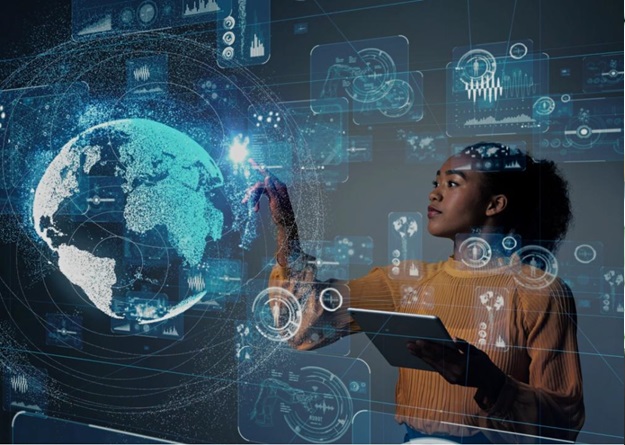On April 2, World Autism Awareness Day sheds light on the great strides being made in both accepting and supporting people who are neurodiverse. Neurodiversity refers to diversity in the human brain and cognition, including in sociability, learning, attention, mood and more. The United Nations is focusing this year’s celebration on the contributions that people who are autistic make in workplaces, institutions and daily life.
Refocusing the narrative on acceptance and celebrating autism relates to the neurodiversity paradigm. It dictates that neurodiversity is a form of human diversity. Just as there is no “right” gender or race, there is no “right” form of neurological functioning. However, the celebration should go well beyond today alone.
The newer approach to neurodiversity is changing the way that businesses, institutions and organizations consider people who are autistic and greatly benefit from having them in their environments every day. Employers and professionals at educational institutions alike are seeing the value of neurodiversity in their workforces and student bodies. As a result, they’re not only creating inclusive, diverse environments, but they’re reaping wonderful benefits.
World Autism Awareness Day presents a good opportunity for professionals and peers everywhere to reflect on how they’re supporting neurodiversity and creating inclusive environments. There are so many advantages to embracing these individuals and their various, remarkable skill sets in greater numbers.
Elon Musk & workplace neurodiversity
Elon Musk announced his autism diagnosis while hosting Saturday Night Live. He later gave a TED talk about growing up with autism spectrum disorder (ASD), formerly known as Asperger’s. Musk explained that he often struggled with social cues and nuances, instead having literal interpretations. However, he said it’s possible that autism was useful for him in a technical field. It likely contributed to his ability, commitment, dedication and success in programming.
Professionals at JP Morgan Chase are also embracing neurodiversity as an asset. They’ve launched program to hire more neurodiverse individuals and train managers on how to create a positive environment for them as employees. Representatives at JP Morgan said its program’s hires are 90%-140% more productive in technical roles than individuals with 5-10 years of experience in those positions.
Companies that embrace neurodiverse candidates are positioning themselves for success. In the next decade, 1.5 million youths with ASD will be reaching adulthood and entering the workforce. There is a tremendous opportunity to attract talent from this pool of job seekers.

Exploring neurodiversity in education
More than 50,000 students with ASD graduate high school in the US each year. Currently, just 1 in every 3 attend college, but more institutions are offering greater programming aimed at supporting them.
One of the biggest hurdles for students, even those who attend institutions that have support systems, is the fear of discrimination and rejection. University leaders can do more to create welcoming environments for them and educate their student bodies and departments, as unfortunately many still have a limited view of diversity. While great strides have been made in other diversity areas, neurodiversity and disabilities are often still overlooked. Universities can do more to support neurodiverse students through representation, by launching clubs or by offering sensory-friendly versions of orientation and other events. These efforts showcase that the institution respects and appreciates these students for who they are.
Placing greater importance on skills & strengths-based approaches
More business and university leaders are now embracing differences by taking strengths-based approaches to recruiting and admissions efforts. Corporations are finding neurodiverse candidates with powerful skill sets that benefit their businesses. University admission departments and faculty are also now considering how to play into students’ strengths to power their career paths and success.
Here are a few strengths that are often associated with individuals who are neurodiverse:
- Great attention to detail
- Strong ability to identify errors
- Accuracy
- Honesty
- Skilled visual thinking
These traits are without a doubt useful in all environments and fields. By making even small accommodations or offering different ways for individuals with autism or who are neurodiverse to engage, all will benefit.

Employ tools to support people with autism
With the right accommodations and tools at their disposal, individuals with autism, among others, are certain to thrive and deliver. One area to start with and consider, which comes up in professional, academic and social environments alike is video. How you’re approaching video content to support individuals who are neurodiverse is one area you can likely make some improvements in. Video is critical in today’s educational system and workplaces, where 74% of trainers say they incorporate video.
While video is an effective tool for teaching and instruction, offering captions and audio description with your videos can benefit people with ASD. People with ASD may experience difficulty in audio processing, and sometimes it can cause them to miss information from videos. Captions offer a second input method, which can help them remember more of the content. Audio description, which offers verbal descriptions of people’s demeanors and emotions, can also be useful for people with ASD.
Overall, shifting our focus on acceptance and appreciating the strengths that come with neurodiversity is a great step forward. Professionals should look inward this World Autism Awareness Day to find small ways to boost their efforts for inclusion and diversity. To learn more about solutions that can help in this journey, reach out to Verbit.




